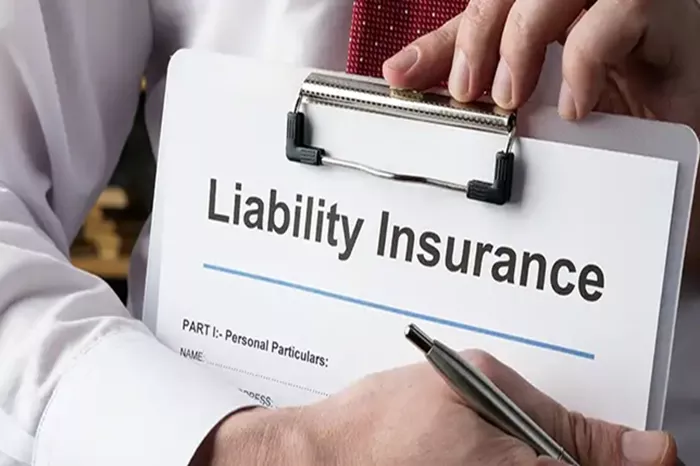Flood insurance is a critical safety net for homeowners, offering financial protection against damage caused by floods. However, one common question that often arises is whether flood insurance rates are the same across the board. The short answer is no, flood insurance rates can vary significantly depending on various factors. In this article, we will explore what affects flood insurance rates, how to compare flood insurance quotes, and why it’s essential to understand your flood insurance coverage in detail.
Introduction to Flood Insurance
Flooding can occur in many different forms, from river floods to heavy rainstorms or even flash floods. Regardless of the cause, the damage caused by floods can be catastrophic for homeowners, making flood insurance an essential policy for protecting one’s property. However, when shopping for flood insurance, many homeowners are often left wondering whether the rates they are being quoted are reasonable and competitive.
Before we dive into the factors that influence flood insurance rates, it’s essential to understand the basics of flood insurance. Flood insurance is a specialized policy that helps protect your home and personal belongings from flood damage, which is typically not covered under standard homeowner’s insurance policies. The National Flood Insurance Program (NFIP) is one of the most common providers of flood insurance in the United States, but private insurers also offer flood coverage.
Factors That Influence Flood Insurance Rates
When determining flood insurance rates, insurance companies consider a range of factors. The most significant elements that affect flood insurance rates include:
1. Location of Your Home
The location of your home is perhaps the most critical factor in determining flood insurance rates. Homes that are situated in flood-prone areas, such as those near rivers, lakes, or coastal regions, will face higher flood insurance premiums. On the other hand, homes that are located in areas with a low risk of flooding will have lower rates. The Federal Emergency Management Agency (FEMA) provides flood zone maps that can help homeowners determine their flood risk based on their location. Flood insurance rates are typically higher for properties in high-risk areas, known as Special Flood Hazard Areas (SFHAs).
2. Elevation of the Property
The elevation of your home plays a significant role in how much you will pay for flood insurance. Homes that are built at a higher elevation are less likely to experience significant flood damage, and as a result, they typically have lower flood insurance rates. If your home is below the base flood elevation (BFE), you will be more likely to pay higher premiums because your property is at greater risk of flood damage. This factor is particularly important in areas that are prone to storm surges or heavy rainfall.
3. Type of Flood Insurance Coverage
The type of flood insurance coverage you choose will also impact the cost of your premiums. There are typically two main types of coverage:
- Building Property Coverage – This covers the physical structure of your home, including the foundation, walls, and roof. If your home is damaged by a flood, this type of coverage helps pay for repairs or rebuilding.
- Personal Property Coverage – This covers personal belongings such as furniture, electronics, and clothing. If these items are damaged or destroyed by a flood, this coverage will help reimburse you for the loss.
Opting for higher coverage limits or more extensive coverage options can increase your premiums. It’s essential to evaluate your needs and understand the different options available to you when selecting your flood insurance policy.
4. Age and Construction of Your Home
Older homes or those with outdated construction may face higher flood insurance rates. These homes are often less resilient to flood damage, and as a result, they may cost more to insure. Newer homes with modern construction and flood-resistant features, such as elevated foundations or flood barriers, may qualify for lower premiums.
5. History of Flooding in the Area
If your home is located in an area with a history of flooding, your flood insurance rates may be higher. Insurance companies look at past flooding incidents in the area when determining the likelihood of future flooding events. A property in a flood-prone area with a history of frequent flooding will likely face higher insurance premiums.
6. Flood Insurance Deductibles
Your deductible is the amount you pay out of pocket before your flood insurance policy kicks in. Choosing a higher deductible can lower your premiums, but it also means you will have to pay more in the event of a claim. It’s important to strike a balance between a deductible that lowers your premium and one that you can afford to pay if a flood damages your property.
7. The Insurer You Choose
Not all insurers offer the same rates for flood insurance. Some insurance companies may specialize in offering lower premiums, while others might charge more due to additional services or coverage options. Shopping around and comparing flood insurance quotes from multiple providers is essential to ensure you’re getting the best deal for your situation.
How to Compare Flood Insurance Quotes
When searching for flood insurance, it’s crucial to compare quotes from different insurance providers. Flood insurance rates can vary significantly, even for similar coverage options. By comparing multiple quotes, you can ensure you’re getting the best price for the coverage you need. Here are some tips on how to compare flood insurance effectively:
1. Use Online Tools
Many insurers and online platforms offer tools that allow you to compare flood insurance rates. These tools provide a quick way to see what different insurers are offering and can give you a better understanding of your options. By entering details about your property, you can receive personalized flood insurance quotes.
2. Review Coverage Options
When comparing flood insurance, don’t just look at the price. It’s also important to compare the coverage provided by each policy. Ensure that the flood insurance policy covers your home adequately in the event of a flood. Consider the limits of your coverage, the deductible, and any additional coverage options that may be available.
3. Check the Insurer’s Reputation
Choosing a trustworthy insurance company is just as important as finding a competitive rate. Look for reviews and ratings of insurance companies to ensure they have a reputation for paying claims promptly and providing excellent customer service. You can also check with your state’s insurance department to see if the insurer has a history of complaints.
Flood Insurance Rates and the NFIP
The National Flood Insurance Program (NFIP) offers standard flood insurance policies for homeowners, and these rates are set by FEMA. While the NFIP offers relatively standardized rates, private insurers may offer different rates and coverage options. It’s essential to understand how these rates compare and what kind of coverage you need.
In general, flood insurance rates through the NFIP are based on factors such as the flood zone, the elevation of your home, and the value of your property. For properties in high-risk areas, the NFIP may offer subsidies or discounts to help keep premiums affordable. However, private insurers may offer more flexibility in terms of coverage limits, exclusions, and additional coverage options.
Why Flood Insurance Rates Are Not the Same
As we have discussed, there are numerous factors that influence the rates of flood insurance policies. These factors, including location, elevation, property age, coverage choices, and insurer, all contribute to variations in pricing. It is important to remember that while some aspects of flood insurance rates are non-negotiable (such as FEMA’s pricing for NFIP policies), many factors are within your control. By understanding what affects flood insurance rates and taking steps to manage your risk, you can potentially lower your premiums.
Furthermore, flood insurance compare tools and services can help you find the best deal available. Don’t be afraid to shop around and consult with experts to ensure you’re getting the right coverage at the right price. Flood insurance can be a crucial investment in your home’s protection, but it’s important to understand how to manage its cost effectively.
Conclusion
Flood insurance is an essential part of homeownership, especially for those in flood-prone areas. Understanding that flood insurance rates are not the same for every homeowner is critical to making an informed decision about your coverage. By considering factors such as location, elevation, coverage options, and the insurer you choose, you can ensure that you’re getting the best deal for your flood insurance policy. Take the time to compare different options and always choose a reputable insurer to protect your property and assets effectively.
To get started on finding the right flood insurance policy for your home, be sure to explore flood insurance coverage and flood insurance rates that match your needs. By making informed choices, you can protect your home from the devastating effects of flooding while ensuring you’re paying a fair price for your coverage.
Related topic:
Are Flood Insurance Proceeds Taxable?





















